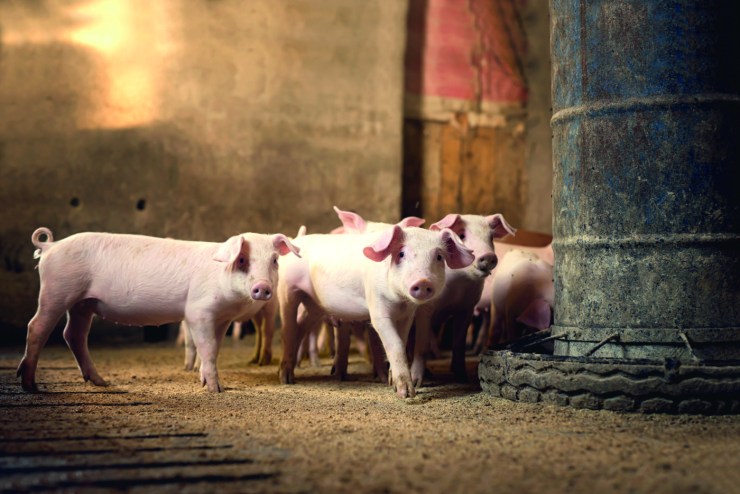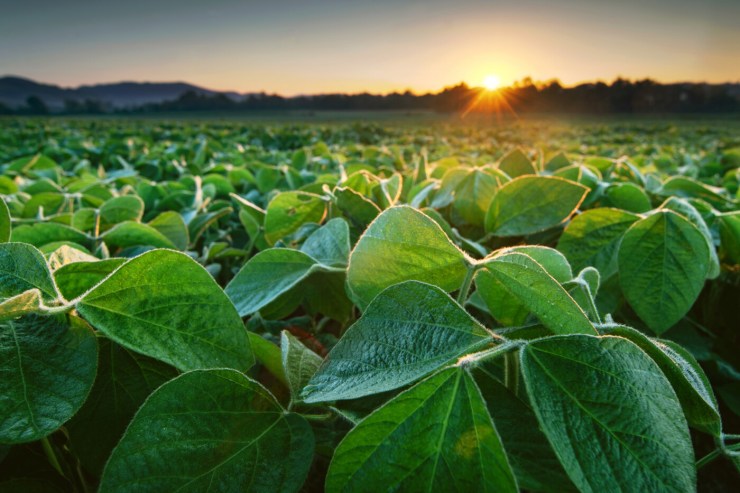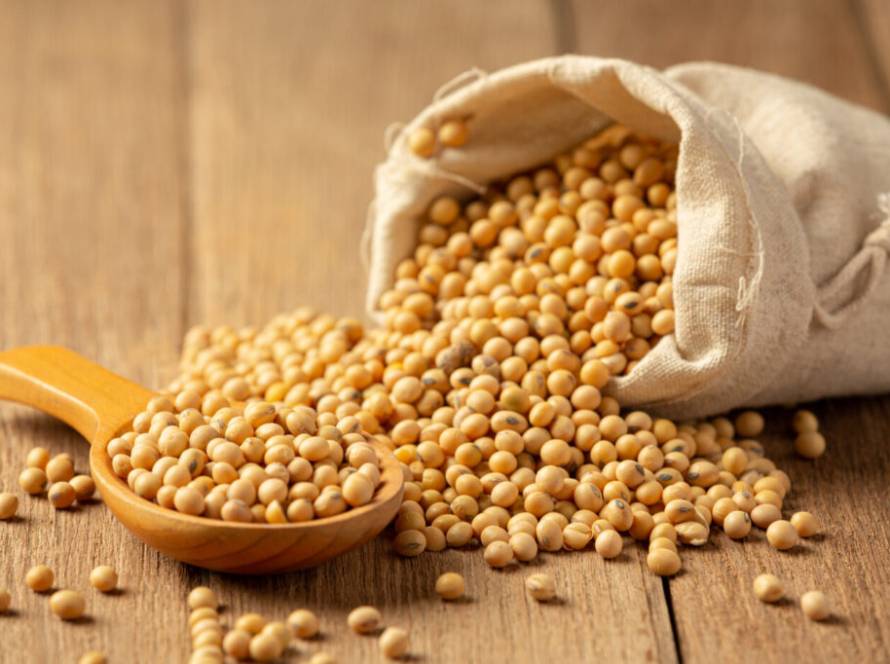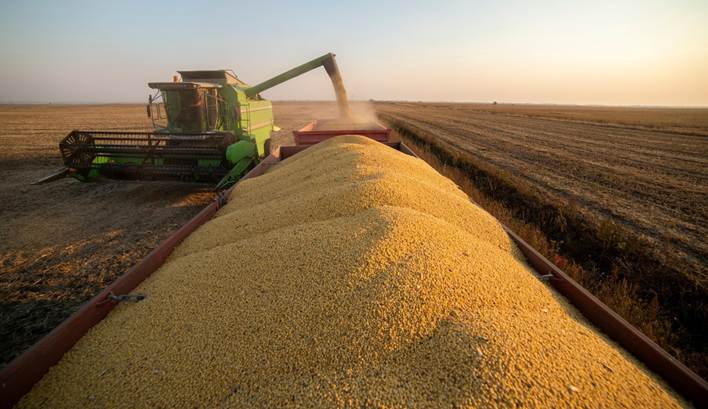On April 16, 2025, Embrapa Soja – a unit of the Brazilian Agricultural Research Corporation – will celebrate its 50th anniversary. The date will be marked by a series of commemorative actions that celebrate the institution's decisive contribution to the development of soybean farming in Brazil, currently the world's largest soybean producer, with an estimated 167 million tons in the 2024/25 harvest, according to the National Supply Company (Conab).

Photo: Danilo Estevao
As part of the celebrations, Embrapa Soja is preparing a special publication that will address the importance of soybean cultivation, the role of Embrapa and its partners in the evolution of national production, as well as reflections on the direction of research and future challenges.
The unit also launched a commemorative hotsite, which brings together a timeline with the main milestones of its trajectory, the current research fronts and the history of soybeans in Brazil. The portal It also offers a selection of free publications for download, reinforcing its commitment to the dissemination of technical and scientific knowledge.
Commemorative events
On May 26, at the headquarters of Embrapa Soja, in Londrina (PR), at 1:30 pm, the workshop Embrapa Soja 50 years: history and perspectives will be held, the objective of which is to discuss the role of Embrapa Soja in the Brazilian leadership in the world production of soybeans, as well as technological development and innovation as a basis for maintaining

Photo: Fernando Dias
productive sustainability of Brazilian soybeans. The event is open to the public, upon registration via the website Embrapa Soybean.
From July 21 to 24, 2025, Embrapa Soja will hold the 10th CBSoja and Mercosoja 2025 (CBSoja), in Campinas (SP). With the theme “100 years of soybeans in Brazil: pillars for tomorrow”. In its tenth edition, the Congress will celebrate Embrapa Soja's 50th anniversary and discuss the main pillars of the production chain, focusing on adding value and developing sustainable agriculture, based on technology and digital innovation. The initial schedule and registration are available here.
Historical contributions
When Embrapa Soja was created in 1975, Brazil was a food importer and the country’s soybean production was approximately 10 million tons. “The increase in Brazilian production over the last 50 years has been based on science and innovation. Brazil is now able to produce more in less space and with great efficiency and competitiveness,” highlights the general manager of Embrapa Soja, Alexandre Nepomuceno.

General Manager of Embrapa Soja, Alexandre Nepomuceno: “Embrapa Soja played a leading role in the development of Brazilian soybeans, so much so that, in 50 years, the institution developed around 440 soybean cultivars” – Photos: Disclosure/Embrapa Soja
In 1975, Embrapa Soja aimed to develop technologies for soybean production in Brazil, but the institution became a world reference in research for the crop in tropical regions. “Until 1970, commercial soybean plantations in the world were restricted to temperate and subtropical climates, whose latitudes were close to or above 30º. Embrapa Soja researchers and their partners broke this barrier by developing varieties adapted to tropical conditions with low latitudes”, says Nepomuceno. Embrapa Soja played a leading role in the development of Brazilian soybeans, so much so that, in 50 years, the institution developed around 440 soybean cultivars. To support genetic improvement programs, Embrapa Soja has one of the largest active soybean germplasm banks in the world – a collection of seeds with more than 65 thousand soybean accessions.
In addition to the development of cultivars, a system for the production of tropical soybeans was created. “This includes recovery/maintenance of soil fertility, crop management techniques, control of weeds and pests and diseases, improvement of seed quality, among others. This set of technologies has enabled the agricultural sustainability of soybean cultivation in Brazil,” reinforces Nepomuceno.
The adoption of Integrated Insect Management (IPM-Soy), for example, allows the use of insecticides to be reduced in crops by 50%, ensuring greater profitability for soybean farmers, in addition to greater environmental preservation, explains Nepomuceno. Another contribution to the soybean production system was inoculation with N-fixing bacteria (rhizobia).
In 2023 alone, this solution provided an estimated savings of 25 billion dollars, by eliminating the use of

Photo: Marcos Carolino de Sá
nitrogen fertilizers. Embrapa Soja estimates this value considering the soybean area, soybean production, the value of the fertilizer (urea), and the efficiency of nitrogen fertilizer use. In 2014, Embrapa Soja identified another beneficial bacteria that stimulates soybean growth (Azospirillum). The combination of these bacteria results in productivity gains of around 16% per year. Biological nitrogen fixation used in soybean crops also allows for a reduction in greenhouse gas emissions. “Concern for the sustainability of production systems has always been a priority that guides the actions of the soybean production chain,” reinforces Nepomuceno. “In addition, our research is aimed at increasing productivity with cost rationalization, allowing producers to obtain adequate income, food security, and social benefits,” he assesses.
Embrapa Soja also has a strong contribution to the implementation of public policies, such as the Agricultural Zoning of Climate Risk (ZARC-Soja), the soybean sanitary gap, regulations in the area of seed and grain quality and the regulation of tank mixtures of pesticides, among other actions.
Embrapa Soybean of the 21st Century
To contribute to the sustainability of soybean production, Embrapa is currently strengthening its actions in four research areas: Advanced Genetics, Bioinputs, Low Carbon Soybeans and Digital Agriculture. Research is being directed to increase the participation of biological inputs in the control of insect pests and diseases and in promoting plant growth, as well as the replacement of non-renewable fertilizers with biologically based inputs.
In the first decades of this century, molecular biology and genetic engineering have been producing changes in the development of new soybean cultivars. Researchers at Embrapa Soja have been using selection assisted by molecular markers in plant breeding to develop cultivars, which provides maximum efficiency, speed and low cost. “The use of gene editing allows rapid advances in genetic improvement for a wide range of characteristics, such as, for example, improving the quality of oil and protein, as well as resistance to diseases, soybean cultivars that are more tolerant to adverse climate conditions,” explains Nepomuceno.
In addition, different technologies aim to contribute to the conservation of environmental resources and the mitigation of greenhouse gas emissions. The Low Carbon Soy Program, for example, is creating

Photo: Disclosure/OPR Archive
guidelines and protocols to certify the sustainability of Brazilian soybean production, making tangible qualitative and quantitative aspects of emissions and carbon sequestration in the grain production process. It is being guided by the measurement of benefits and the certification of production practices that demonstrably reduce greenhouse gas emissions.
Digital transformation is another area of research that has been bringing changes to the field, through connectivity solutions, remote sensing, sensors, drones, among others. “Digital agriculture enhances crop planning and monitoring, rationalization in the use of inputs, facilitating and increasing the efficiency of producers in their decisions, allowing for increased productivity and profitability”, argues Nepomuceno.
Embrapa Soybean Profile
Embrapa Soja is one of Embrapa's 43 research units. Founded on April 16, 1975, in Londrina (PR), Embrapa Soja has a history based on the development of technological solutions for soybean cultivation. Embrapa Soja defends and provides guidance on responsible management practices that range from sowing to post-harvesting of soybeans.
The technologies are used to ensure the sustainability of production systems and meet the needs of different profiles and sizes of agricultural properties, contributing to the profitability of producers and thus generating benefits for society as a whole. Embrapa Soja also encourages the development of wheat in Paraná, São Paulo and Mato Grosso do Sul and has made an important contribution to the establishment of sunflower cultivation in Brazil.
Its headquarters, in the Warta district, has 22,390 m2 of built area, divided into 34 greenhouses, 34 laboratories, an auditorium with support rooms, a library, a restaurant, a garage for vehicles and agricultural machinery, support sheds, an experimental kitchen and administrative buildings.
Embrapa Soja also has two experimental fields: Fazenda Maravilha (Londrina-PR), where research is conducted in the area of Crop-Livestock-Forest Integration (ILPF) and soil management, and Fazenda Modelo, located in Ponta Grossa (PR), where genetic improvement and seed production activities are carried out. Embrapa Soja currently has 252 employees, including 61 researchers, the majority of whom have doctorates and post-doctorates in various areas of knowledge.






